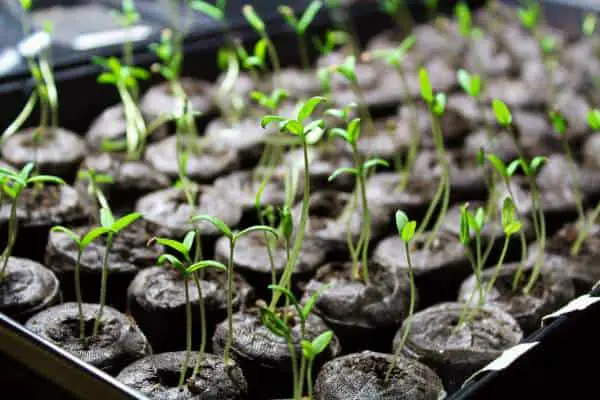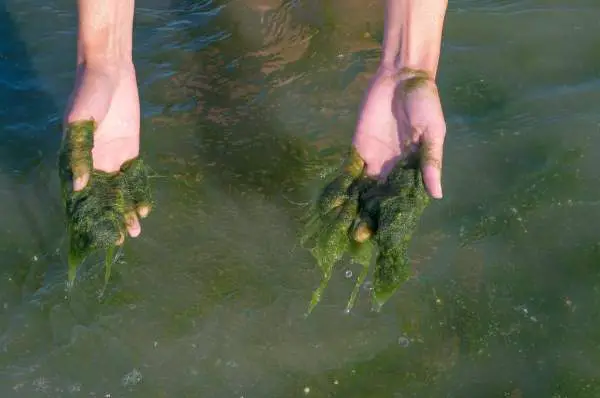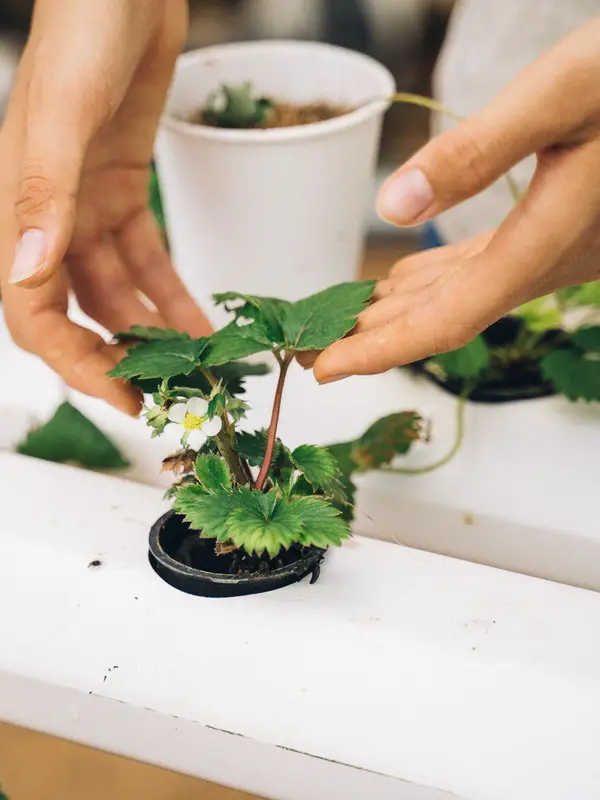Hydroponic growers face many problems at different stages, and one of the most common can go undetected for a while and can cause severe amounts of damage to plants.
Root rot is a disease that can affect every single grower, and the symptoms can lead us all to think it is a deficiency in another area. Plants can begin wilting or showing signs of nutrient burn, or they might die altogether. There are many reasons these symptoms can happen from lighting, pests, nutrients, or feeding cycles, but in the end, it is a case of root rot.
Once we gain some experience, and if our plants have suffered from root rot, it’s a thing we always know to look out for. But, if we are unaware of what to look for, there is no way we’ll know how to prevent it, and how we can treat root rot in our hydroponic systems.
What Causes Hydroponic Root Rot?
Root rot can affect plants in different ways. This will depend on whether they are a flowering type, or they are crops such as lettuce or herbs. Signs of root rot include curling leaves in an upward or downward direction, plants having slow growth, or yellowing in the leaves.
One of the reasons that make root rot hard to detect can be that, it might be affecting all of your plants’ healthy roots at the same time. All plants can suffer from stunted growth at the same time, so it might appear there is another problem.
The primary cause for root rot is insufficient levels of oxygen reaching your plant’s root systems. This is more often found in Deep Water Culture systems or systems where roots are exposed to water for extended periods.
You can quickly see if there is a problem by lifting your tank lid and see if it smells funny, this is a clear sign you have root rot in your system. Next, you can look at your plant’s roots. Some roots can become tinted from the nutrients they are absorbing, but if they appear to be brown and slimy, then this is a clear sign root rot has already set in.
It might sound like a simple problem to overcome. Monitoring your water levels and making sure there is plenty of air won’t be enough, because, at this stage, something else will most likely be occurring.
Mold and pathogens such as Pythium and Phytophthora are water molds that can attack plants when the conditions are right. Nutrient solutions which are too warm produce the ideal conditions for these molds to grow, and they will rapidly infect all your system.
The spores of Pythium and Phytophthora become immobilized and can survive for several months. They take up home in the dying roots and are dispersed via reused growing media, polluted water, or a system that has become contaminated. Even other equipment or things you handle can be enough to reintroduce these spores back into a clean system.
Either during this stage, or the first stages of root rot, a coating of slime will form around the roots. This barrier is strong enough to prevent any oxygen from reaching the roots, and it is this that allows these pathogens to worm their way in and smother any part of the root system.
Treating Root Rot in a Hydroponics System
A lot of what you can do to treat root rot will be the same as what you can carry out for prevention. But, there are a couple of things you can do to immediately tackle the problem is there are only a few plants that are infected.
If plant leaves are showing signs of dead matter, all this should be removed and discarded away from your growing room. You can remove your plants and physically clean the root system. If you do this over a sink, you can remove anything that is dead or slimy from the roots.
The next stage is to soak the root bed in a sterilizing agent for up to a maximum of 12 hours. One product that is ideal for this is Physan 20. It should be noted, this product doesn’t know the difference between bad bacteria and good bacteria. This can also be an excellent time to begin sterilizing any growing equipment you have.
The addition of root builders can also be beneficial in helping roots grow stronger. These are packed full of good bacteria and help to aerate your nutrient solution. Many growers also use this as an addition to their regular feeding schedule as a way to boost plant growth and claim impressive results.
One other type of compound which can be added is microbial inoculant mixtures, these also help with new growth in the rooting system, and also aid in the eradication of diseases. The bacteria in these lead to the breakdown of what is causing the root rot.
Both the root builders and the microbial inoculants can be added as a prevention rather than a cure. However, these methods should not be relied on as the overall way of preventing root rot, this will come down to many other factors which will need your attention.
If you are looking for a natural remedy for root rot rather than using any of the above chemicals. The following natural recipe was devised by Heisenberg, who is a member of the Rollitup forum. The following methods help breed beneficial microbes in DWC systems.
The following recipe needs to be added after you have performed the previous root sterilization, and system clean with Physan 20. This formulation isn’t added directly to your nutrient solution but formulated as a tea, which you then add as required. To make this tea, you do need to purchase a few ingredients, some of which are discontinued so we will provide alternatives.
Hydroguard or any solution that contains the bacteria Bacillus genus can be used. Hydroguard has plenty of good reviews, but the Hydroguard solution requires use within six months of opening, so it is better to order the smallest bottle required.
Great White comes from the same company as the root builder specified above, it delivers explosive root growth and contains a mycorrhizal fungus that is well suited for a variety of plants.
Ancient Forest consists of 100% pure forest humus and contains a high diversity of microorganisms. This can be replaced by any earthworm casting product, but this is produced by General Hydroponics who are well renowned for superior products.
Before proceeding with the formula, there was an edit to the post. Both the Hydroguard and the Great White solutions can be replaced by Mycogrow soluble as a cheaper alternative.
Heisenberg Natural Formula Steps
- Add 2 gallons of non-chlorinated water to a clean bucket, and add two air stones. For this to be effective, you need as much air as possible.
- Now, add 15-30ml of Hydroguard and about 1/4 to 1/2 scoop of the Great White powder (these are approximate, just don’t go overboard).
- Take an old pair of stockings or pantyhose and place 2 handfuls of Ancient Forest (or EWC alternative) inside.
- Tie off and place over one of the air stones in the solution. You can also put one air stone inside the stocking to give more stimulation. This method is more straightforward than straining two gallons of tea if you add the Ancient Forest directly to the bucket.
- Add one tablespoon of molasses. This wakes the microbes and gives them something to eat. Never add molasses to your nutrient tank. The beneficial bacteria will die in the tank due to starvation, but you will be replacing these, so it is okay.
- Let your tea solution bubble for 48-hours at room temperature. You can use it after 24, but it is more effective at 48. If you are using EWC, the water will foam, this is normal.
- After 48 hours, you can store your tea in the refrigerator where it can stay fresh for up to 10 days. If it begins to go bad, you can smell a bad odor. If you smell anything like rotting or sweaty socks, throw it away and make a new batch. Your fresh tea can smell of earth or slightly mushroomy.
- To start, add 1 cup to your nutrient tank for every gallon of water.
- Add 1 cup to the tank at 3-day intervals.
- You can drizzle a little of the tea at the base of your plant stalks. This helps inoculate the root crown (plant dependent). The solution can become cloudy, but your roots will remain white and highly stimulated.
When you multiply microbes with this method, your products will last longer. Once you have ridden your roots of slime build-up from root rot, you can add 1 cup for every 10 gallons at one-week intervals to help prevent future outbreaks.
Prevention of Root Rot in Your Hydroponic Systems
As we can see from the above information, root rot is a culmination of different elements and organisms. Before looking at how we can prevent root rot in your systems, here is a quick recap of the factors which can lead to its appearance:
- Dead or decaying matter in the reservoir – any dead leaves can start something terrible.
- Lack of oxygen – Once water becomes stationary, it becomes stagnant, and there is no oxygen passing to your roots.
- Heat – Warm nutrient solutions make it easy for bacteria to reproduce. A cool reservoir makes it harder for bacteria and fungi to survive.
- Agitating young roots: When roots are young, they need a chance to build up their defenses. Moving them will weaken these and expose them to pathogens that can quickly attack.
- Light leaking into the reservoir – This can be a boost to any unwanted growths.
Solutions to Prevent Root Rot
To not only get rid of but also prevent root rot, you need to take a two-pronged approach. This includes:
- Directly treating the plant’s roots – same as above in treating against root rot.
- Changing your plant’s environment – changing how plants are growing, so root rot is unable to.
Some of the following procedures will be the same as the treatment steps above but are crucial steps nonetheless.
Adding Beneficial Root Bacteria
As prevention, these beneficial bacteria can be added throughout your plant’s growth. Once mixed with the water, they are a handy way of preventing and treating root-related diseases while making sure nutrients are available to your plants. Subculture B, Rooters, and Piranha are alternatives to the preferred formula Hydroguard.
The one bacteria that is most beneficial is Bacillus Amyloliquefaciens because it will survive better in reservoirs than other forms of Bacillus bacteria while fighting a vast number of root ailments.
Plenty of Bubbles
Because lack of oxygen in your system is the primary cause of root rot, it is essential to make sure you have plenty of bubbles. If everything appears to be okay in your system, and you are still showing symptoms, it might mean you need a secondary air pump, or a larger unit altogether.
Root rot can’t thrive in an oxygenated environment, but, it is also crucial to make sure your roots are not being overly disturbed. You can never have too much oxygen in your water, so finding the ideal position for your pump will bring nothing but benefits. You can find some air pumps with dual outlets. These can either be placed in separate tanks or different locations to maintain healthy airflow.
One pro tip is to make sure your hoses are black so no light can penetrate.
A Cool Grow Room
It is essential your growing area is under 80F with the ideal being under 75F if possible. This is the easiest way you can lower your reservoir temperature without the use of a chiller unit. The warmer solutions become, the less dissolved oxygen they can retain, and then can’t pass the highest oxygen amounts to your plants.
Using one of the supplements mentioned, you can let run your system a few degrees warmer, but it is far better to try and maintain around the optimal 72F for your water.
Being Clean and Sterile
Any dead leaves or debris that find their way into your reservoir will become a breeding ground for bacteria. Cleanliness extends way beyond your reservoir and includes all of your growing areas. One bit of advice is to thoroughly clean all of your growing tools either in between growing periods or on a routine basis. Hydrogen peroxide only delivers a temporary solution. Anything stronger and you need to make sure it doesn’t find its way to your system.
When you have a regular cleaning routine, this goes a long way to letting any pathogens survive in your growing area and hydroponic system.
Stop Disturbing Roots
With the way a hydroponic system works, it is essential for you to change your water on a regular basis. When you do this, you can disturb the rooting systems. In the later stages of plant growth (flowering stage), these become sensitive to pH and nutrients. Changing water between one week and ten days helps plants access nutrients easier.
What is crucial is do not to disturb plants when they are seedlings or clones and are trying to become established in your system. At this stage, they lack a colony of beneficial bacteria and have not developed their own biofilm which helps protect their roots against pathogens.
If you are in need of changing a full reservoir, this can severely upset the balance, and young roots might find they have to start again from scratch.
During the first few weeks of a plant’s growth (plant-dependent), it is advisable to only top the reservoir up with additional nutrient water before making a full change and system flush. It is, for this reason, it is a continual struggle against root rot.
Prevent Light Entering Your Reservoir
As much as harmful bacteria and organisms love the light, roots hate it in equal amounts (think air pruning). If you are using grow lights, this problem is worsened because you are giving everything these bacteria need to thrive.
DWC reservoirs are kept in almost pitch black by a lot of hydroponic growers. To be sure you have a reservoir that is capable of fending off any light, there are a few things you can do to help.
- Use black tubing – This stops light leaks which might not be obvious.
- Reflective coverings – Your reservoir lid could be getting warm from your grow lights if it is dark in color. However, using a reflective material can prevent heat seeping through the cover and warming your reservoir interior.
- Reservoir construction – there are many reservoirs which have a thin wall construction. The thicker you can get the better because these are less likely to let any light soak through.
- Taping light leaks – light can get in all sorts of cracks and gaps. Be sure to tape these with thick tape that will prevent light seepage.
- Net pot light seepage – you can cover the tops of net pots to prevent light soaking through the growing media. Net pot covers are a quick and easy way to avoid this.
- Black tubing – dark tubes can prevent light exposure to your reservoir. This often goes unnoticed.
Conclusion
There are plenty of hydroponic growers who throw in the towel if they find out they have root rot, and get rid of all their plants and start again. However, not all occasions require anything this drastic, and the same problem can occur if there are no preventative measures in place.
It can be more beneficial to get root rot and save your plants, because this way, you will know the symptoms, and best of all, you will know how to tackle the problems. There will be occasions when you can’t save your plants, but when you know there is something you can do, it will reduce the chances of losing any crops at a later date.





